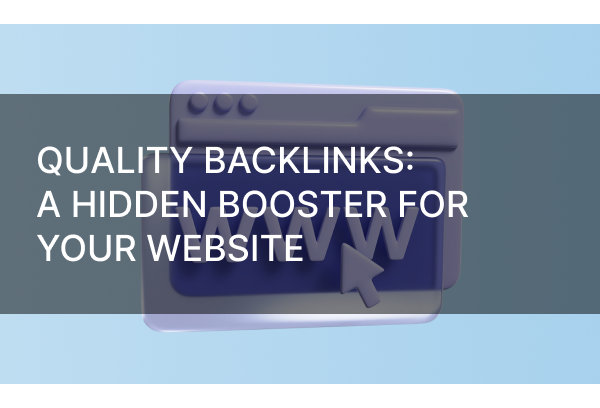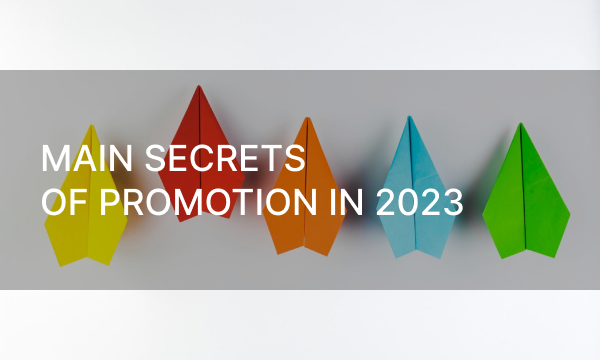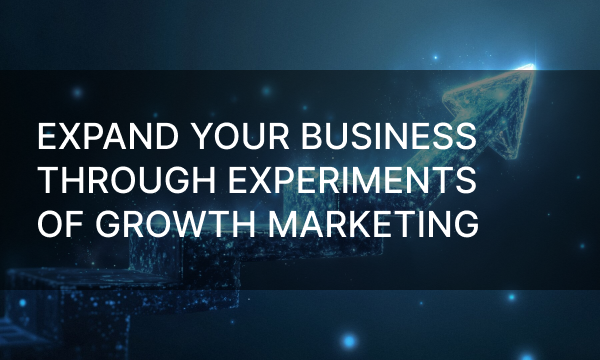Intro: Brief overview of AI, its importance and increasing use in the advertising industry.
Artificial intelligence has a far-reaching influence, stretching beyond individual experiences and into the realm of advertising. From voice assistants to social media suggestions, AI has revolutionized the way brands engage with their audiences through tailored and precise ads. AI enables brands to effectively stand out in the chaotic advertising industry and to establish strong connections with their target consumers, ultimately leading to brand awareness, customer retention, and increased sales.
The boom of AI in advertising can be attributed to its effectiveness in enhancing ad targeting, a feature that is lacking in traditional ads. AI enables brands to segment the target audiences based on demographics, geolocation, interests, and behavior patterns. A wealth of data enables brands to create customized ads that cater to specific preferences and needs of their target audience. This high level of personalization has proved to drive brand loyalty and customer satisfaction.
In this article, we’ll delve into the role of AI in advertising and its importance for improving ad efforts. We’ll provide tools, tips, and best practices of using AI to boost ad strategies. We’ll also give examples of brands that have successfully implemented AI-powered tools. Whether you are a marketer, advertiser, or business owner, you’ll be equipped with the knowledge to effectively incorporate AI into your ad strategies.
Traditional advertising vs AI-driven advertising
For decades, businesses have relied on traditional forms of advertising, such as print and television ads, radio commercials, and billboards. These methods have shown their effectiveness in the past, but with the rise of technology and the emergence of AI-driven advertising, the landscape has transformed completely. By utilizing advanced algorithms and machine learning, companies can now pinpoint specific audiences and deliver personalized ads, resulting in more precise targeting and increased ROI.
AI-powered ads use emerging technology to monitor and evaluate consumer actions, resulting in ongoing adjustment and enhancement of ad efforts. In contrast, traditional methods have limited data gathering and analysis capabilities, leading to the lack of performance and conversion rates. AI ads are more cost-efficient as they optimize marketing budget. Traditional ads are still impactful in reaching a broad audience, as they evoke a sense of familiarity and nostalgia, creating a stronger emotional bond with clients. Despite that, the rapid growth of AI-powered ads has made them a preferred choice for businesses.
Critics may claim that AI-powered ads lack the humanity and creativity compared to the traditional advertising methods, and there is some merit to this argument. However, AI has the potential to enhance the creative process by generating ideas and supplying information that the human mind may not be able to conceptualize on its own. In this way, AI can serve as a source of inspiration for creative ideas. Furthermore, AI can assist with tasks like generating ad copy and visuals, freeing up valuable time for developing more sophisticated and impactful campaigns.
Tools for AI-Driven Advertising
AI tools play a key role in helping businesses comprehend their target audience’s behaviors and preferences by analyzing large quantities of data. This, in turn, helps optimize the performance of ads and leads to a higher ROI. These tools also enable more precise predictions and recommendations, resulting in the success of ad campaigns.
These are important AI-powered tools for advertising:
- Predictive analytics involves leveraging past data and consumer insights to make forecasts for future preferences. By analyzing previous actions, AI tools identify which ads are most likely to result in conversions among a specific target audience. Companies can customize their ad strategies to meet their audience’s needs.
- Natural language processing is a powerful tool that recognizes text, speech, and even emotions to provide meaningful insights about a company’s target audience. By integrating NLP into their marketing tactics, companies can develop highly personalized and captivating ads, resulting in improved conversion rates.
- Computer vision algorithms are used in image and video recognition technology to examine visual content and comprehend its meaning. This enables businesses to tailor their ads according to the visual components present in the content, making them more relevant to the audience and enhancing user experience.
- By utilizing real-time bidding and programmatic advertising, ad placement optimization technology automatically selects the most suitable platforms, timing, and prices for ads. This ensures that ads reach the appropriate audience at the ideal moment, improving the likelihood of conversions.
- Ongoing monitoring and analysis of ad campaign performance with the help of tracking tools can offer businesses valuable insights into areas of success and areas in need of improvement. This information is used to make immediate adjustments to ad campaigns, ultimately optimizing the whole marketing strategy.
Some of the most popular AI tools for advertising include Google Ads, Facebook Ads, and Amazon Ads.
- Some of the features available on Google Ads include automated bidding, suggestions for ads, and audience targeting options;
- Facebook Ads provides a wide range of targeting options, advanced ad optimization, and automated ad creation;
- Based on a customer’s past search history and purchasing habits, Amazon Ads displays ads that are tailored to their interests.
When selecting AI tools for your advertising requirements, there are several important considerations to take into account:
- Define your advertising goals and objectives as each AI tool has its own set of features and capabilities;
- Consider user-friendliness of the AI tool and whether it has the capability to integrate with your current ad platforms;
- Compare the cost of the AI tool to your budget and read reviews from other businesses on how it has helped them achieve their goals.
Personalization and Targeting with AI tools
AI-powered tools help companies fine-tune ad personalization and track significant trends. Comprehensive understanding of their target audience allows businesses to customize their ad strategies. By analyzing a user’s browsing history, purchase patterns, and social media engagement, AI tools accumulate a detailed profile of their interests, preferences, and behaviors. This valuable information is used to deliver personalized ads.
The effectiveness of personalization and audience targeting in AI-powered ad campaigns has been proven by the following successful examples:
- Netflix uses an AI-driven ad campaign recommendation system to provide its subscribers with personalized content based on their viewing history and preferences. As a result, there has been a considerable rise in user involvement and retention.
- By utilizing AI technology, Spotify creates customized playlists for individual users, resulting in a significant 30% rise in client interaction. The advanced AI tools have the capability to comprehend and cater to specific target audiences, ultimately resulting in a higher ROI.
- Amazon’s advanced product recommendation system provides customers with personalized offers based on their past browsing and purchasing behavior. This has greatly boosted sales and has also enhanced customer satisfaction by tailoring the shopping experience to their interests.
Tips for Implementing AI-powered Ad Tools
Revolutionizing the advertising industry, the integration of AI tools for different tasks has become a game-changing strategy. Thanks to AI, ad personalization, audience targeting, and data analysis have become seamless and highly effective, leading to better results and increased ROI. Integrating AI tools in advertising may seem difficult for businesses, but it can be achieved with the right approach.
When incorporating AI tools in advertising, remember a few key tips:
- The primary focus of a successful ad campaign is to identify the most beneficial areas of advertising for automation. This includes defining the objectives and goals of an ad campaign. By having a clear understanding of the desired outcomes, the budget and appropriate tools for automation can be selected more effectively.
- Create a well-structured and categorized customer database. AI technology functions most effectively when supplied with precise and relevant data. By segmenting the customer database according to demographics, interests, and behavior, companies can generate personalized ads with a higher rate of conversion.
- To effectively reach and engage the desired audience, it is crucial to understand their behaviors. By tailoring ads to be personalized and relevant, they are more likely to resonate with the audience. AI tools for gathering and analyzing data allows for ongoing monitoring of the ad campaign for necessary adjustments and improvements.
- Continuously observe and evaluate the effectiveness of the automated ads. While AI tools may assist in optimizing ad campaigns, it remains crucial to closely control them to detect any potential problems or opportunities for enhancement. This allows for necessary modifications to be made and ensures the highest ROI.
- One essential step in advertising is testing and optimizing ads. Utilizing A/B testing lets you test multiple ad versions to determine which yields better results, enabling businesses to make informed decisions. A team of skilled experts proficient in AI can effectively utilize this technology for advertising purposes.
- Choose AI tools in line with your business objectives and invest wisely. There is a wide range of AI-driven ad platforms to choose from, so carefully select the ones that best suit your business goals. It’s better to start small and gradually expand AI functionality, than to overload an ad strategy with too many tools at once.
- It is crucial to frequently update and train the AI tools used for advertising, as the technology is continuously advancing. Staying current with the latest updates and improvements is vital. Providing appropriate training to the team responsible for utilizing AI tools will ensure a smooth implementation.
Tips for Real-Time Bidding with AI Tools
Real-time bidding in advertising has transformed the digital marketplace for purchasing and selling ad space. The implementation of AI technology has greatly improved its effectiveness. By constant data analyzing and real-time adjusting, AI tools deliver ads to the most engaged and relevant audiences. The result is increased CTR and conversions, ultimately driving up sales and revenue. AI can decrease the expense of bidding by identifying the most efficient ad placements.
Here are some tips for implementing AI tools for real-time bidding:
- Use high-quality data, as inaccurate data confuses the AI algorithms, resulting in ineffective bidding strategies. Hence, it is essential to frequently cleanse and refresh the data used by AI tools for their optimal functionality.
- Carefully evaluate and experiment with different options to ensure that the selected AI tools align with the specific requirements and objectives of the ad campaigns. Consider data type, algorithmic capabilities, and history of effective performance.
- Properly configure and calibrate AI tools for real-time bidding for the algorithms to operate within. Monitor and make necessary adjustments to maintain optimal performance and prevent any potential biases or errors in the AI’s decision-making process.
Conclusion
AI has undoubtedly played a crucial role in transforming the advertising industry. Its capacity to process and interpret vast amounts of data, personalize messaging, and interact with customers in real-time has the potential to significantly improve the effectiveness and efficiency of ad campaigns. AI allows businesses to gain a deeper understanding of their target audience and create tailored ads. This has resulted in highly targeted and successful ad campaigns, increased conversions and ROI.





